For this artist, ‘Star Wars’ and archaeological digs go hand in hand
Daniel Arsham has become a big name in contemporary art thanks to his concept of fictional archaeology. In his work, the ancient seems modern, while pop culture is rescued from the Roman Empire
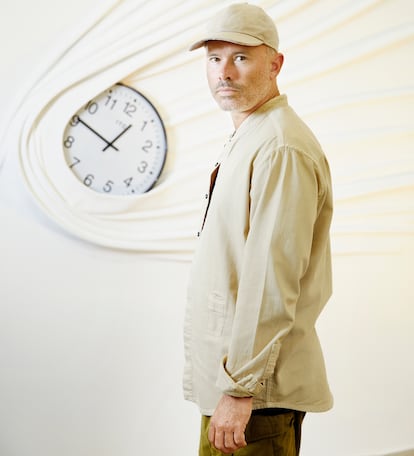
Daniel Arsham, 43, is undoubtedly one of the most prolific and in-demand artists on the planet. He studied at the School of Architecture & Design in New York City on a scholarship before moving back to Miami. There, he helped create a gallery space called The House, one of the most important collective projects the city has ever seen.
There doesn’t seem to be anything that Arsham can resist: he’s embraced painting, sculpture, architecture and cinema, while collaborating with dozens of brands. In a universe whose tastes are constantly changing, he’s managed to become the center of attention with the unique concept that runs through his work. His most-famous work – The Venus of Arles – can mutate from a second-century sculpture into a bronze piece, or from C-3PO into a bust found in an archaeological excavation.
“I first thought about the concept of fictional archaeology about 16 years ago, after returning from [Easter Island]. [When I looked at the giant] statues that emerged from the ground, it made me think about archaeology, about how we relate to the past through objects,” he explains to EL PAÍS via video call. He’s opening his latest exhibition at the Perrotin art gallery in Paris. It’s his forever home, thanks to his friendship with the legendary French art dealer Emmanuel Perrotin.
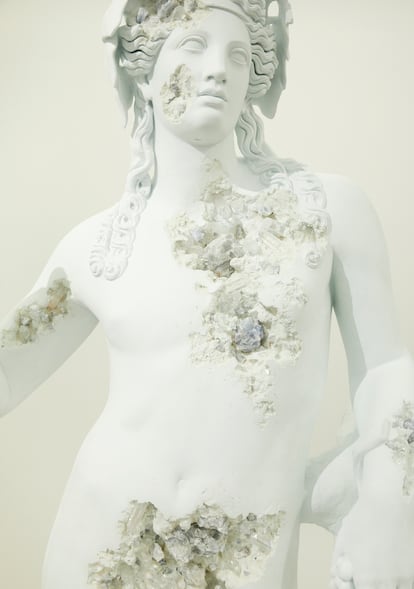
“Our entire narrative flows through objects, so I thought about what would happen if you could reverse engineer it with that concept in mind. [I try to create] something that you can directly associate with a moment in time. That’s why I use computers, cameras, or entire cars in this project, because they mean something at a certain moment in time.”
When asked if he’s going to continue with this concept throughout his career, he smiles. “It’s difficult to say if this is going to follow me throughout my life, because it depends on where I’m going, what I’m [exploring] or what I’m doing… but I think I have a good intuition about when something has run out of steam. The concept of fictional archaeology is very familiar to me,” he explains, referring to his project. He has already toured the world with it several times.
On August 24, 1992, Arsham witnessed Hurricane Andrew pass through Miami, where he was living at the time. The terrible experience deeply marked his work. The Arsham family survived in a shelter built under the house itself. And, while their insurance payout eventually allowed them to rebuild their home, the artist has never been able to forget the trauma.
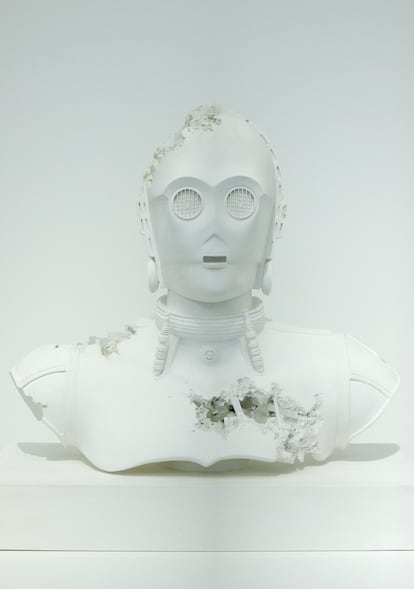
He even reproduced what happened in a film, in which a house very similar to his own appears. “I saw how a hurricane devastated my childhood home in one fell swoop. [Typically], when you’re a child, you understand space in a different way,” he notes. “You think less about how [a home] was built and more about how it makes you feel. What happened to me was a process that allowed me to see through the walls and see how everything was designed. I think the photos I took afterwards were my first attempt at understanding life through a medium.” The way in which Arsham creates objects — not only visually, but with the materials he uses, such as volcanic lava or glass — has a lot to do with that moment.
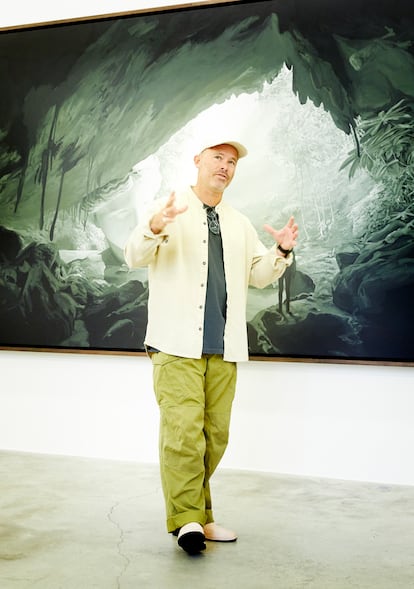
Arsham’s parents, who came from the worlds of banking and law, far removed from art, followed the advice of one of their son’s teachers, who saw that young Daniel’s drawings were something more than just scribbles. Despite his talent, however, his attempt to study architecture didn’t work out. “They didn’t accept me [into the program], so I enrolled in art school. I studied sculpture, painting and cinema, without focusing especially on any of them… although I settled on painting. [But later], I [sculpted] more than anything else,” he recalls.
When the Cleveland-born artist is asked if he remembers exactly when he decided he wanted to go into the art world, Arsham doesn’t have to give it much thought. “As children, we love to draw and we spend the day doing it. Later, we forget… but drawing is something organic for all of us. At the age of 11, I decided it was something I loved. It also helped that my grandfather was an amateur photographer and I understood, thanks to him, that everything depends on the point of view from which we hold the camera. Everything passes through us, the camera is just an instrument.”
“In the end,” Arsham shrugs, “artists are alchemists: we transform what we see.” He admits that pop culture has a great influence on his work. “I work with this idea of archaeological fiction. To create that, I need to develop objects with a part of contemporary art and another part of a recognizable face.” An example of this are his works based on the iconography of Star Wars or Back to the Future, modern classics that inhabit the American artist’s work.
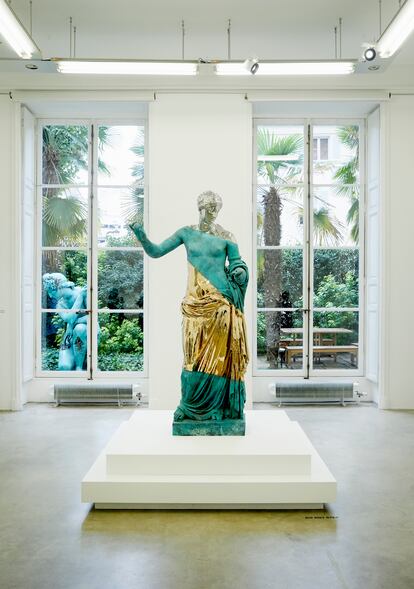
It doesn’t seem like he has to worry about success: he’s made films with Juliette Lewis and Mahershala Ali. He has founded his own architecture studio, Snarkitecture, and collaborates with other firms in the same field on major projects. And he’s turned Arsham Studio into one of the great global references of contemporary art, a multimillion-dollar business that marks the path, rather than merely following it. Under the umbrella of his studio, he’s collaborated with iconic brands such as Pokémon, Heinz, Dior, Porsche and Disney.
Among those who desire exclusivity, Arsham is now one of the most sought-after names. Adored by artists such as Usher, Pharrell Williams, Kim Jones or Jay-Z and claimed by galleries and museums around the world, the artist warns that his world isn’t a place for the weak of spirit, pessimists, or anyone who scares easily. “To the people who approach me for advice, I always repeat the same thing: 99% aren’t going to make it. For a long time, I literally lived in my studio. So, you have to be lucky, but you shouldn’t give up, either. It can take a long time until you see the results of your work get you somewhere. So, if you decide to dedicate yourself to [art], my advice is to arm yourself with patience and never give up. But, even so, there are no guarantees that you can make it,” he concludes.
Sign up for our weekly newsletter to get more English-language news coverage from EL PAÍS USA Edition
Tu suscripción se está usando en otro dispositivo
¿Quieres añadir otro usuario a tu suscripción?
Si continúas leyendo en este dispositivo, no se podrá leer en el otro.
FlechaTu suscripción se está usando en otro dispositivo y solo puedes acceder a EL PAÍS desde un dispositivo a la vez.
Si quieres compartir tu cuenta, cambia tu suscripción a la modalidad Premium, así podrás añadir otro usuario. Cada uno accederá con su propia cuenta de email, lo que os permitirá personalizar vuestra experiencia en EL PAÍS.
¿Tienes una suscripción de empresa? Accede aquí para contratar más cuentas.
En el caso de no saber quién está usando tu cuenta, te recomendamos cambiar tu contraseña aquí.
Si decides continuar compartiendo tu cuenta, este mensaje se mostrará en tu dispositivo y en el de la otra persona que está usando tu cuenta de forma indefinida, afectando a tu experiencia de lectura. Puedes consultar aquí los términos y condiciones de la suscripción digital.
More information
Últimas noticias
Most viewed
- Reinhard Genzel, Nobel laureate in physics: ‘One-minute videos will never give you the truth’
- Oona Chaplin: ‘I told James Cameron that I was living in a treehouse and starting a permaculture project with a friend’
- Pablo Escobar’s hippos: A serious environmental problem, 40 years on
- Why we lost the habit of sleeping in two segments and how that changed our sense of time
- Chevy Chase, the beloved comedian who was a monster off camera: ‘Not everyone hated him, just the people who’ve worked with him’










































